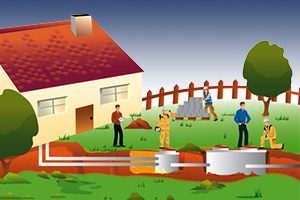
In order to properly care for and maintain your residential septic system, it is in your best interest to take a little time to learn about the four primary components of your septic system. The reason why this is so important is that there are things you can do with regard to each of these components to keep your residential septic system running free of problems.
Other common names for a residential septic system include:
- individual sewage disposal system
- on-site system
- on-lot system
- on-site sewage disposal system
- on-site wastewater treatment system
- leach field
- soil absorption system (SAS)
Regardless of what you call it, the four primary components of a septic system are the septic tanks, the drainfield, the soil and a pipe that takes wastewater away from the home and into the system. Consider signing up for an annual preventative maintenance program with your septic system company for worry free services that will help you keep your system running in tip top shape.
Component #1 – The Septic Tank
The tank for your septic system in New Bedford is a watertight container that is made out of either concrete, polyethylene or fiberglass and is buried underground. The primary function of the septic tank is to hold onto the wastewater from your home for a period of time until the solid waste settles out to form a sludge-like substance, with any grease or oils floating to the top as scum.
The sludge and scum are prevented from leaving the tank and entering the drainfield or leachfield area by the design of the septic tank. Compartments and a special T-shape outlet in the tank are used for this purpose. In addition, screens are also recommended for use as a means of reducing the amount of solids getting to the drainfield.
Some newer septic tanks are built with risers that have lids at the surface of the ground. This new design method allows your septic tank to be easily located and inspected by your septic system maintenance company. It also allows for easy pumping of the tank when necessary.
To prevent sludge and scum from building up inside your septic tank, you should have your system pumped every one, three or five years depending on use or as-needed. Speak with your septic system maintenance service provider and inspector to find out how effectively and efficiently your residential system is working. This will help prevent problems or failures from happening and will keep your system running properly.
Component #2 – The Drainfield
After the wastewater leaves the septic tank, it discharges into the drainfield. Once it arrives in the drainfield which is also known as the leachfield, it is treated further by aerobic bacteria in the soil.
If the drainfield of your New Bedford septic system has become overloaded with too much liquid, it can flood and cause sewage to flow up to the surface. This can also result in backups throughout your home in sinks, toilets and other plumbing fixtures. Once this happens, all treatment of wastewater ceases until the system can be serviced or repaired.
Many states require homeowners to create a reserve drainfield on their property that will be suitable to create a new drainfield if the one they are currently using fails. The best way to take care of your drainfield is to make sure that all the components of a septic system are in proper working order and are properly maintained. Once again, an annually preventative maintenance program is recommended to prevent failure and costly repairs.
Component #3 -The Pipe
A pipe is the third component in your residential septic system. The pipe is the go-between from your septic tank to your drainfield. This pipe must also be inspected and checked on a regular basis to make sure it is in proper working order and does not have any cracks or clogs. Ask your septic system maintenance provider about proper maintenance for your entire septic system and all of its unique components.
Component #4 -The Soil
Believe it or not, the soil that is in your drainfield is an essential component of your septic system. Once the wastewater moves from the septic tank into the drainfield, it percolates into the soil. This is a natural method used for many years as a means of removing harmful bacteria, viruses and other pathogens.
Because it is so important to the effectiveness of your septic system, the type of soil used needs to be suitable for the job it needs to do in the drainfield. This should have been addressed when your septic system was designed, built and installed, however its a good idea to ask your maintenance service inspector to take a look at the soil in your drainfield to ensure that it is suitable for the job.
A Word About Alternative Systems
If you live in an area where the soil is not suitable for a traditional septic system, like Lakeville, Cape Cod, or Marshfield, you might need to look into getting an alternative system installed. An alternative system is also used in areas where there are too many traditional residential septic systems in use or if the system has been placed too close to surface water or groundwater.
Know Your System
In addition to knowing the four primary components of your septic system, it is important to know the location of your system on your property. You should have an “as-built” drawing for your home that accurately defines the property line, any buildings on your property and your septic tank, drainfield and reserve drainfield, if available.
If you do not have an “as-built” drawing for your home, you can get a copy from your local Board of Health. You will need this drawing in the event of a formal inspection, particularly if you plan on selling your home, but it is good to have on-hand anyway in the event of an emergency. You should be able to see lids and/or manhole covers for your septic system on the drawing for quick and safe access.
Tanks that are older can be difficult to locate on a property, even for seasoned septic system professionals. This is because there are usually no visible parts, unlike modern systems. If your tank doesn’t have risers, your inspector or maintenance serviceman can help you locate your septic tank underground.
Call Septic Preservation Services at 877-378-4279 for a septic maintenance program and to answer any of your septic questions or visit www.septicpreservation.com

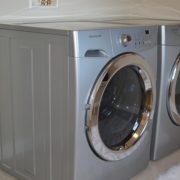
 Most fabric softeners can have a negative effect on a septic system, but there are better alternatives.
Most fabric softeners can have a negative effect on a septic system, but there are better alternatives.
 Most of the customer care information that you will find online with regard to septic systems is geared toward residential consumers.
Most of the customer care information that you will find online with regard to septic systems is geared toward residential consumers.

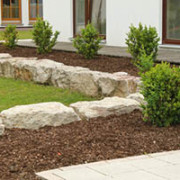
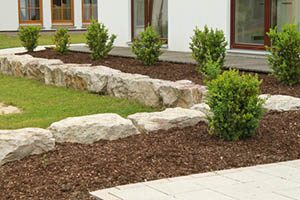 Most property owners that have a septic system understand the three hard and fast rules associated with taking care of a drainfield: don’t plant anything over it, don’t build anything over it and don’t park anything over it.
Most property owners that have a septic system understand the three hard and fast rules associated with taking care of a drainfield: don’t plant anything over it, don’t build anything over it and don’t park anything over it.